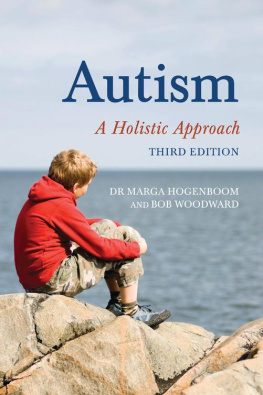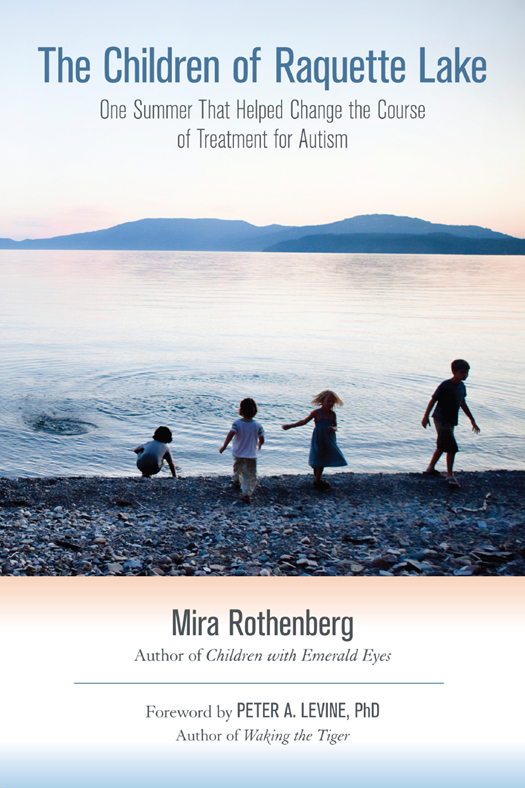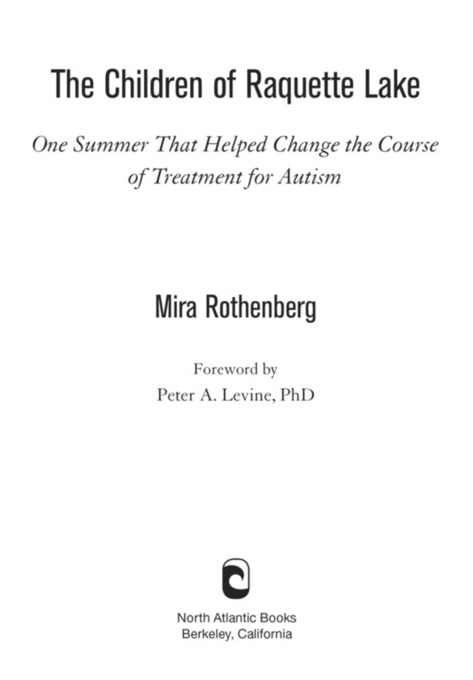Praise for The Children of Raquette Lake
Mira Rothenbergs case histories poignantly illustrate how frightened children cling to maladaptive behavioral strategies to protect themselves. Through this chaos, Rothenberg provides an integrative theme emphasizing that successfully engaging vulnerable children with loving care within a context of safety is a powerful intervention that reduces fear and, at times, is effective in enhancing appropriate social behavior and emotional resilience. She has captured the frustration and pain that many clinicians experience while working with these troubled children. Rothenbergs insightful model of rehabilitation is captured in her understanding that the behavioral features of these terrified children previously may have been adaptive in dangerous and life-threatening environments. Be prepared to fight back the tears as you share the experience of Mira Rothenberg, a gifted therapist and writer, as she tries to reach the sacred emotional territory of schizophrenic and autistic children.
Stephen W. Porges, PhD, professor of psychiatry, director of the Brain-Body Center at the University of Illinois at Chicago, and author of The Polyvagal Theory: Neurophysiological Foundations of Emotions, Attachment, Communication, and Self-Regulation
A tour de force of remarkable intuition, intelligence, and daring.
Carol B. Hillman, author of Teaching Four-Year-Olds: A Personal Journey, Before the School Bell Rings, and Mentoring Early Childhood Educators
Mira Rothenbergs legacy is the transformation of attitudes toward children who suffer. This book offers both a personal memoir and a professional insight into an incredibly creative and powerful mind. I could not put it down.
Mira Hamermesh, award-winning filmmaker and author of The River of Angry Dogs: A Memoir
Mira Rothenberg has made great contributions and changed the attitude toward autistic children in Lithuania. She has helped us to find the right direction in our work with them.
Irena Veisaite, PhD, professor of philology and European theater history, active contributor to Lithuanian culture and education, and chair of the Open Society FundLithuania Board, founded by George Soros
About Blueberry Treatment Centers, Inc.
Blueberry was a reflection of the time that it livedand died.
Evelyn Abelson, chief of social work, Blueberry Treatment Centers, Inc.
Blueberry was born of Charisma and Chutzpah in equal parts, and was nursed on generosity, sacrifice, and volunteered or coerced expertise.
Dr. Earl A. Loomis, Jr.

Also by Mira Rothenberg
Children with Emerald Eyes:
Histories of Extraordinary Boys and Girls
Copyright 2012 by Mira Rothenberg. All rights reserved. No portion of this book, except for brief review, may be reproduced, stored in a retrieval system, or transmitted in any form or by any meanselectronic, mechanical, photocopying, recording, or otherwisewithout the written permission of the publisher. For information contact North Atlantic Books.
Published by
| North Atlantic Books | ERGOS Institute Press |
| P.O. Box 12327 | P.O. Box 110 |
| Berkeley, California 94712 | Lyons, Colorado 80540 |
Cover photo iStockphoto.com/Blend_Images
Cover design by Suzanne Albertson
The Children of Raquette Lake: One Summer That Helped Change the Course of Treatment for Autism is sponsored by the Society for the Study of Native Arts and Sciences, a nonprofit educational corporation whose goals are to develop an educational and cross-cultural perspective linking various scientific, social, and artistic fields; to nurture a holistic view of arts, sciences, humanities, and healing; and to publish and distribute literature on the relationship of mind, body, and nature.
North Atlantic Books publications are available through most bookstores. For further information, visit our website at www.northatlanticbooks.com or call 800-733-3000.
Library of Congress Cataloging-in-Publication Data
Rothenberg, Mira.
The children of Raquette Lake: one summer that helped change the course of treatment for autism / Mira Rothenberg.
p. cm.
Summary: Written for therapists and those whose lives have been touched by autism, this book by Mira Rothenberg, a psychologist who changed the face of treatment for autism in the 1950s, provides a personal account of the summer of 1958, when she and two colleagues successfully treated eleven severely disturbed children on an island in upstate New York.Provided by publisher
eISBN: 978-1-58394-505-6
1. Autistic childrenNew YorkRaquette Lake. 2. Autism in children
Treatment. I. Title.
RC553.A88R685 2012
616.85882dc23
2011038950
v3.1
I dedicate this book to my son, Akiva (Kivie),
and my late daughter-in-law, Rebecca.
Authors Note
Ive written of Jonny before in the famous Harpers article, Rebirth of Jonny. I wrote about both Sarah and Jonny in my first book, Children with Emerald Eyes. Both descriptions have been slightly amended for this book.
Contents
Foreword
In writing this foreword I find myself humbled by the task of presenting any framework that adequately describes the unique and illuminating magic of these tender and enlightening stories of struggle, despair, hope, courage, healing, and transformation. Mira Rothenberg goes beyond dry clinical analysis. Her shining, direct words speak for themselves in this engaging new book. She is able to bring such vital aliveness to these children that the reader gets to know them and treasure them in so many surprising and unanticipated ways. But let me simply begin my challenging task by first considering a brief context for her brilliant artistryas therapist, writer, and rare human being.
The numbers of children diagnosed with severe mental illness continues to escalate exponentially: autistic spectrum, ADHD, oppositional defiant disorder, conduct disorder, anorexia/bulimia, mood, anxiety, and bipolar disorders, and so on. One in six U.S. children now has a developmental disability such as autism, learning disorders, or attention-deficit/hyperactivity disorder (ADHD), according to new research from the U.S. Centers for Disease Control and Prevention. Today, children as young as three years old are being put on multiple powerful psychiatric medications, a very disturbing trend.
In attempting to explain the alarming rise in childhood mental illness, researchers have looked for a genetic or neurological basis for these disorders. This mechanistic needle-in-a-haystack approach is an understandable swing from the bad mother attribution of childhood psychopathology of the previous decades. However, both of these theories and speculations have led to solutions that are seriously limited. Indeed, the most recent research, a new study of twins, suggests that environmental factors, prenatal and postnatal, may be at least as important as, if not more important than, genes in causing autism.
Mira Rothenberg has worked with disturbed children for over sixty years. Her success can be credited to not getting caught in the simplistic reductionist dichotomy of nature versus nurture. Rather, she has found ways to reach these troubled children where they have retreated, deep into the tormented recesses of their injured psyches. With Rothenbergs warm and steady hand, with her gentle open heart, her gut instinct and keen intellect, she finds where these kids have retreated and offers them a way to come back from insanity while helping to instill in them the courage to return.












